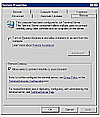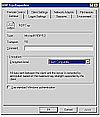How To Setup Remote Desktop On Windows Server 2003
This chapter covers the wealth of tools and options available to administrators in Windows Server 2003, including many enhancements to tools that existed in previous versions of the organisation.
This affiliate is from the volume
In This Chapter
-
Using Remote Desktop for Administration
-
Taking Reward of Windows Server 2003 Administration Tools
-
Using Out-Of-Ring Remote Administration Tools for Emergency Assistants
-
Using and Configuring Remote Assistance
-
Securing and Monitoring Remote Administration
-
Delegating Remote Assistants
-
Administering IIS in Windows Server 2003 Remotely
Best Exercise
bootcfg.exe Syntax
There are several methods by which organization administrators can manage the IT environment'south server resources. Though it is possible to manage each server locally, managing these resources remotely can greatly meliorate productivity. Remote assistants reduces the administrative overhead required to manage servers in any size IT system because information technology provides the flexibility for administrators to be centrally located while managing distributed server resources.
Windows Server 2003 provides the tools necessary for administrators to perform a vast assortment of management functions on remotely located servers. Server application and operating system upgrades tin be performed remotely, too every bit domain controller promotion/demotion and deejay defragmentation.
This affiliate describes the tools available for administrators to manage Windows Server 2003 servers remotely and provides best practices for leveraging remote administration features.
Using Remote Desktop for Administration
Remote Desktop for Administration is one mode of the Terminal Services built into Windows Server 2003. Concluding Services tin can be enabled in one of ii means:
-
Last Server mode. This is the Awarding Server mode that was bachelor in Windows 2000 Server.
-
Remote Desktop for Administration. This is an enhancement of the Remote Administration mode of Windows 2000 Server.
This 2nd Terminal Services mode is used to administer Windows Server 2003 servers remotely. Remote Desktop for Assistants provides remote access to the graphical interface–based tools bachelor in the Windows environment. Remotely managing servers with Remote Desktop for Administration does not affect server performance or application compatibility.
Unlike the other last service mode, no terminal server Client Access Licenses (CALs) are required to use Remote Desktop for Administration. Windows Server 2003 provides two remote administrative sessions, for collaborative purposes, and a console session.
Enhancements to Remote Administration with Remote Desktop Connection
By taking reward of the new Terminal Services client, known every bit the Remote Desktop Connection (RDC), remote administration is enhanced in Windows Server 2003 in several means.
The RDC supports a wide pick of hardware devices, so servers tin exist managed remotely from several different types of client hardware. The RDC is supported on the following hardware types:
-
xvi-bit Windows-based computers running Windows for Workgroups with TCP/IP.
-
32-bit Windows-based computers running every Windows Bone from Windows 95 to Windows Server 2003.
-
Windows CE-based handheld devices.
-
Windows CE-based terminals, or thin clients.
The RDC allows for automated restoration of interrupted network connections. This is fundamental for remote administration. In the event that an ambassador is disconnected in the eye of a mission-critical operation, the RDC will reconnect the session without losing the ambassador's place in the operation.
The RDC supports a slap-up deal of customization for the look and feel of a remote session. Providing high color, audio, and total screen sessions, the RDC allows you to control the graphic options and connectedness speed. This is an of import feature because as you connect remotely to servers over a dull WAN link you will want to throttle the bandwidth usage for those particular sessions.
One of the biggest improvements to the RDC involves client resource redirection, which is bachelor to Windows Server 2003 and Windows XP. You now accept the capability to admission local drives, network drives, and printers through the remote connexion. Cutting and paste, as well as large file transfers, can be accomplished between the client and server in a remote assistants session.
Finally, in addition to the ii remote sessions bachelor for remote administration, Windows Server 2003 allows a console mode that enables y'all to connect to the "real" console of the server. Now administrative functions, such every bit some software installations that previously required local interaction, tin can be performed remotely.
Enabling Remote Desktop for Administration
Enabling Remote Desktop for Administration is a elementary process. Unlike Windows 2000, the Remote Desktop for Administration feature is at present a separately configurable component from Terminal Services and has some new flexibility options previously unavailable.
The default level of encryption for remote sessions
The default level of encryption for remote sessions is bidirectional 128-bit. Some older terminal service clients might not back up 128-bit encryption.
The Remote Desktop for Administration characteristic is actually installed past default in Windows Server 2003, but it is installed in a disabled status for security reasons. To enable the feature with a default Kickoff menu configuration, perform the post-obit steps:
-
From the Control Panel, double-click the System icon.
-
Choose the Remote tab.
-
On the bottom of the screen, click the check box to Allow Users to Connect Remotely to your computer, every bit shown in Effigy 8.1.
-
Click OK to complete the configuration.
 Figure 8.1 Enabling Remote Desktop for Administration.
Figure 8.1 Enabling Remote Desktop for Administration.
If the Windows Server 2003 will be accessed remotely from a terminal server customer that does not support high encryption, the encryption level of the remote session can be set to Client Compatible. This encryption level will provide the highest level of encryption to the remote session supported by the client. To change the default encryption level on the server to Client Compatible, follow these steps:
-
Open up Last Services Configuration from All Programs\Administrative Tools.
-
In the right pane, under the Connection column, right-click RDP-Tcp, and choose Backdrop.
-
Set the encryption level to Client Compatible, as shown in Figure eight.2, and click OK to consummate the configuration.
 Effigy 8.2 Setting the encryption level for Remote Assistants.
Effigy 8.2 Setting the encryption level for Remote Assistants.
All-time Practices for Remote Desktop for Assistants
Agreement the following aspects of remote administration will enable organization administrators to make the best use of the new Remote Desktop for Administration features in Windows Server 2003:
Utilize the Console Mode
With the new panel mode of connectedness available in Windows Server 2003, you can collaborate with the remote server as if you are straight at the concrete server. This enables y'all to see pop-ups and letters that might just appear at the console.
Configure Disconnect and Reset Timeouts
By default, disconnect and reset timeouts are non ready. This has the potential to lock y'all out of remote sessions if there are ii remote sessions that are agile but in a disconnected land. On the flip side, when configuring the timeouts, permit enough time then that accidental disconnections can be resumed without resetting the session. By default, when a connectedness is broken, the session goes into a disconnected state and continues to execute whatever process it is running at that time. If the session is configured to reset when the connectedness breaks, all processes running in that session volition be abruptly stopped. Disconnect and reset timeouts tin exist configured using the Final Services Configuration Administrative tool.
Preventing Eavesdropping
For security purposes, when you are using the console mode of remote administration, the concrete console of the server is automatically locked to prevent eavesdropping.
Coordinate Remote Administration
With Windows Server 2003, administrators are able to interact through multiple remote sessions. This feature has potential problems, though, if two administrators are unknowingly connected remotely to the aforementioned server. For case, server data might be lost if ii administrators attempt to perform disk defragmentation from 2 remote sessions at the same time.
Distinguish Last Services from Remote Administration
Although administrators take the capability to install software through a Remote Desktop for Administration session, Concluding Services running in Terminal Server mode provides better installation and environment settings for function applications. For general desktop and remote awarding admission functionality, apply a dedicated Terminal Server solution.
Source: https://www.informit.com/articles/article.aspx?p=174352
Posted by: wagonerhilike.blogspot.com

0 Response to "How To Setup Remote Desktop On Windows Server 2003"
Post a Comment